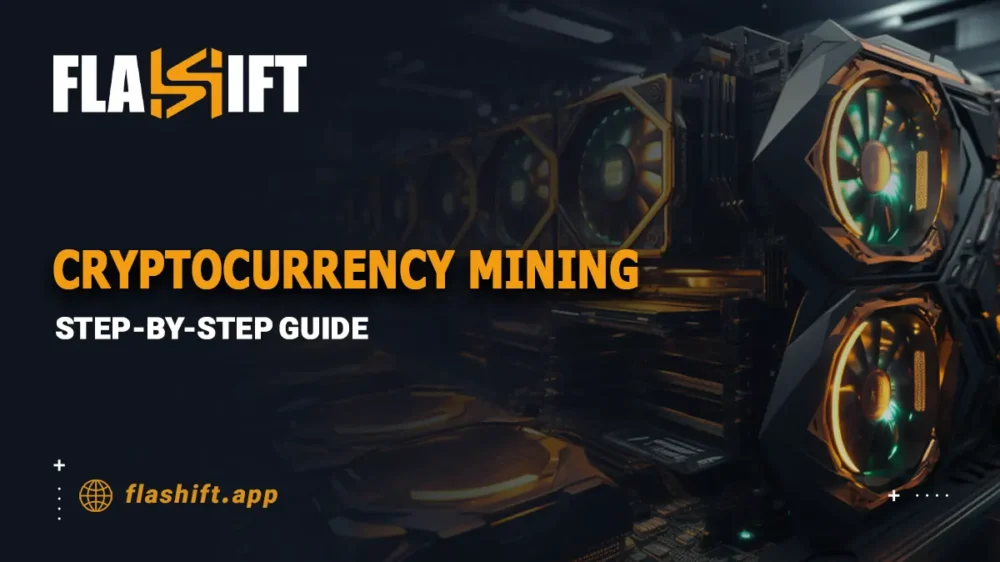Cryptocurrency Mining | Cryptocurrency mining concerns transaction validation over a blockchain network and generally offers certain rewards in return for digital money. Whether you’re mining Bitcoin, Ethereum, or other forms of cryptocurrency, the first step is knowing where to start. This tutorial will cover everything from hardware selection to mining software configuration that one needs to learn to earn blockchain network rewards. Whether you try your luck at cryptocurrency mining or not, this is a step-by-step guide.
For exchange cryptocurrency at the best rate, visit Flashift website, create a registration-free transaction and take advantage of a secure and speedy experience.
What is Cryptocurrency Mining?
Mining is the process that keeps all decentralized digital currencies, such as Bitcoin, Ethereum, and many others, running. It involves solving complex mathematical problems to validate transactions on a blockchain and keep the network secure. In return, miners are rewarded with newly minted cryptocurrency for contributing to this process, which is integral to the decentralized network function.
How Does Cryptocurrency Mining Work?
At its core, cryptocurrency mining has two essential functions: validating transactions and creating coins. Let’s examine each process.
- Transaction Verification:
Those who send or receive cryptocurrency have their transactions collected into blocks and verified as valid to avoid fraud, double-spending, and errors. That is where the miners come into play: complex computers, better known as cryptocurrency mining rigs, seek to solve complex mathematical puzzles. The solution to these math games confirms the transactions and chains them into blockchain blocks, a decentralized ledger that records all cryptocurrency transactions.
- Coin Minting:
Miners also mint new cryptocurrency in addition to transaction validation. When they solve the puzzle and validate a block, they are paid in newly minted cryptocurrency. This is how new coins come into circulation like central banks printing physical money.
Proof of Work (PoW): The Backbone of Cryptocurrency Mining
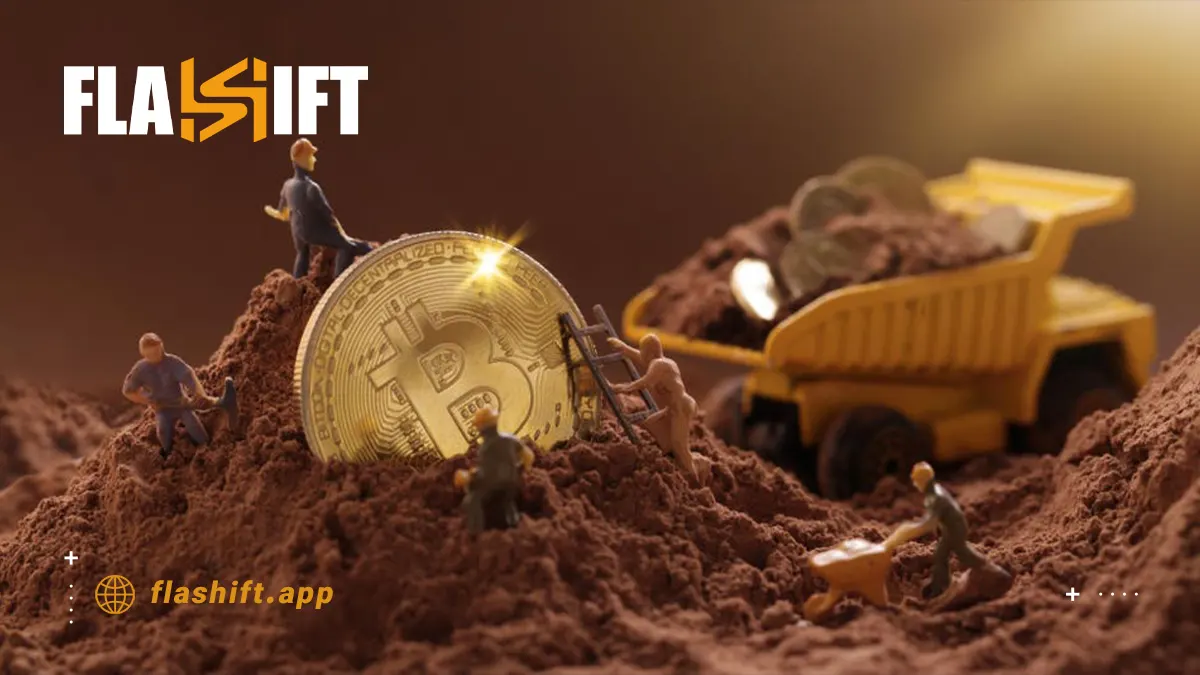
Most cryptocurrencies mine through a consensus mechanism known as Proof of Work. Miners in Proof of Work-consensus-based networks, like Bitcoin, compete in solving mathematical puzzles. These puzzles are designed to be very resource-intensive, making great computational power quite costly in terms of cryptocurrency mining, electricity, and hardware. Over time, the difficulty of the puzzles adjusts to how many miners are working on the network so that new blocks are added to the blockchain at set intervals.
The most widely used consensus mechanism is PoW, although other alternatives, such as Proof of Stake, are also gaining traction. Proof of Stake doesn’t require resource-intensive mining but instead relies on the participants staking some of their existing cryptocurrency to validate transactions.
What Do You Need to Start Mining?
Mining is a competitive business, especially with popular cryptocurrencies such as Bitcoin, and requires unique hardware and software. Here’s a breakdown of what’s needed in cryptocurrency mining:
- Mining Hardware:
Mining used to be done with regular computer CPUs, the most basic form. However, recently, due to the popularity of cryptocurrencies such as Bitcoin, miners have been relying on either ASICs or about a thousand times faster and more efficient GPUs to solve mining puzzles.
- Mining Software:
Once the hardware is set up, mining software will be required to connect your hardware to a blockchain network. Popular ones include the CGMiner, BFGMiner, and EasyMiner. Depending on each cryptocurrency, different software may be used, so getting one that supports the coin one decides to mine is crucial.
- Electricity and Cooling:
Cryptocurrency mining, especially with powerful hardware, is a power-consuming activity, whereas ASICs and GPUs are cases in point. You’ll require a reliable and cheap power supply, as electricity expenses might exceed mining returns within a short period. Moreover, enough cooling is necessary to prevent your mining rig from overheating.
- Mining Pool:
In practice, nearly every individual miner will want to be part of a mining pool. A mining pool is how several miners might combine their resources to solve puzzles faster and share in the rewards. In this case, pooling resources means that the miners make more regular payouts than alone, where the chances of solving a block are decidedly low.
Important points about cryptocurrency mining
Economics of Cryptocurrency Mining
Mining is quite lucrative but, indeed, not devoid of challenges. Several factors affect cryptocurrency mining profitability, including the cryptocurrency’s going price, the network’s difficulty, the electricity cost, and whether or not the mining equipment will ever create a block.
Miners are rewarded with newly minted coins and any transaction fees for validating blocks. Mining is lucrative when prices are high. However, in a bear market, when prices fall, the cost of electricity and equipment outweighs the block reward, decreasing profitability.
Sustainability and Energy Consumption
Environmental concerns are reshaping the cryptocurrency mining industry. While cryptocurrencies like Ethereum and Dogecoin have transitioned to energy-efficient proof-of-stake mechanisms, Bitcoin continues to rely on energy-intensive proof-of-work processes, consuming approximately 169.70 terawatt-hours annually. This has led to increased scrutiny and proposals for climate taxes on crypto mining to fund renewable energy initiatives and reduce emissions.
Integration of Artificial Intelligence
Innovative companies are exploring the integration of artificial intelligence (AI) to optimize mining operations. For example, Quantum Blockchain Technologies claims to have developed an AI tool that can reduce energy costs or increase mining speed by about 30%.
Advancements in Mining Hardware
The mining hardware market is projected to reach $20 billion within the next five years, driven by the introduction of advanced mining chips and potential supply chain diversification. Companies are developing more efficient Application-Specific Integrated Circuits (ASICs) to enhance mining performance while reducing energy consumption. These innovations are crucial for miners aiming to stay competitive in an increasingly challenging environment.
Future Prospects…
The future of cryptocurrency mining is changing. With Proof of Stake finally starting to gain some steam as an alternative to Proof of Work, some networks, notably Ethereum, are abandoning mining altogether. For example, Ethereum’s transition to Ethereum 2.0 moves away from energy-intensive mining and into staking, where each participant needs a certain amount of cryptocurrency to validate transactions.
Nevertheless, Proof of Work mining will likely remain relevant for significant cryptocurrencies like Bitcoin. Advancements in hardware mining and adopting renewable energy sources will also help mitigate environmental concerns and make mining sustainable.
Cryptocurrency mining is a fundamental process that keeps decentralized blockchain networks secure and working. Miners validate transactions and add new coins to the system by solving complex puzzles for which they are paid. Besides the possibility of good returns, mining has many challenges, including the expensive cost of electrical energy, competitiveness, and environmental impact. As changes keep coming in the cryptocurrency world, so does the mining landscape, with new technologies and consensus mechanisms shaping its future.
Read More: Understanding Blockchain Technology: The Backbone of Cryptocurrencies
Setting Up Your Mining Rig: A Comprehensive Guide
Cryptocurrency mining is a standard methodology applied to gain digital currencies through validation methods in blockchain networks. One of the most crucial features of successful mining depends on how well the cryptocurrency mining rig is set up. In this tutorial whether you’re a complete newbie or just aiming for optimization, this tutorial will outline everything you need to know to put your mining rig together.
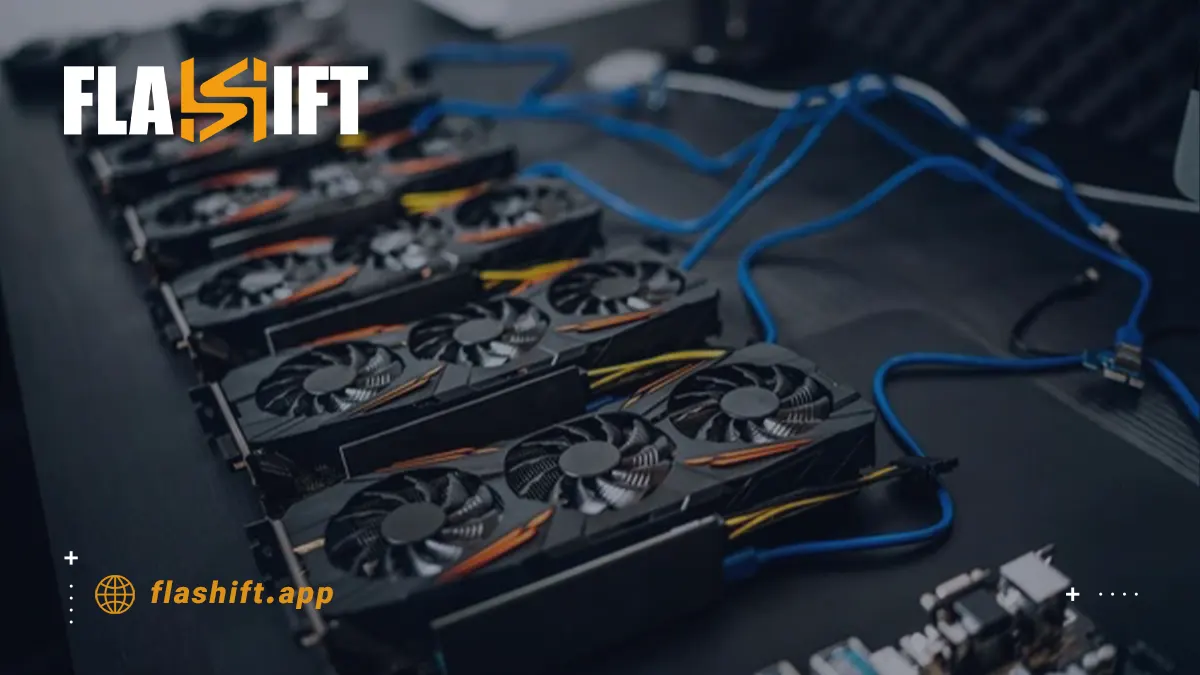
What Is a Cryptocurrency Mining Rig?
A cryptocurrency mining rig is a computer system engineered for cryptocurrency mining. It comprises powerful hardware, mining software, and other components that enable it to solve complex mathematical problems and validate transactions across a blockchain. There are two significant types of mining rigs: ASICs (Application-Specific Integrated Circuits) and GPU rigs.
- ASICs are designed for specific cryptocurrency mining. They do an exceptional job and are very good at mining Bitcoin.
- GPU mining rigs can use regular GPUs to mine many different cryptocurrencies, making them more versatile but much weaker than ASICs.
Components of a Mining Rig
Before you start the mining rig’s setup, it is time to gather all the essential parts that will go into your rig. What you are going to need is:
- GPUs/ASICs: The heart of the mining rig and the most essential thing in GPU mining is a GPU. Some of the commonly used GPUs in mining are from NVIDIA and AMD. In the case of Bitcoin mining, you might use an ASIC machine. Once you know the hash power needed for a particular cryptocurrency that you want to mine, choose the appropriate hardware.
- Motherboard: Choose a motherboard that fits your GPUs and has adequate PCIe slots for connecting GPUs. While several motherboards are recommended, the most popular brands include ASUS and MSI, which have on-build models made solely for mining rigs.
- CPU: Although mining uses GPUs, a good CPU is needed to run your system. A standard Intel or AMD CPU will do the job for most rigs.
- Power Supply Unit (PSU): Mining rigs are pretty power-consuming, so you will need a good PSU that can provide enough power for all components. Ensure the PSU can handle the combined Watt requirements of your GPUs and other parts. Most rigs require at least a 1000W PSU.
- RAM—Memory: 8GB of RAM is usually enough for mining, but it depends on the coin and software used.
- Storage: An ordinary SSD – 120 GB or more significant – is enough to hold an operating system and all mining software.
- Frame/Chassis: You’ll need a sturdy frame to mount your mining rig components. Some miners build custom open-air frames, while others purchase pre-made mining rig cases.
- Risers: PCIe risers connect more than one GPU to a motherboard, keeping the GPUs away from the motherboard for proper cooling and space-saving.
- Cooling System: Because mining involves heating, a good and solid cooling setup is essential. You can do this with external fans or water-cooling systems to keep your GPUs from overheating and ensure that they work stably.
Step-by-Step Guide to Setting Up Your Mining Rig
Step 1: Assemble Your Hardware
You can begin by assembling all the components of your mining rig. Here’s how to do it:
- Install the CPU, RAM, and storage onto the motherboard.
- Attach the motherboard to the mining frame.
- Connect the PCIe risers to the GPUs and then connect those risers to the PCIe slots on the motherboard.
- Mount the GPUs securely on the rig frame and ensure they have enough space for airflow.
- Connect the power supply to the motherboard, CPU, and each GPU.
- Make sure all the components are properly seated and connected.
Step 2: Install the Operating System
Once the hardware is set up, the operating system is installed next. Many mines with Windows or Linux, but some specialized mining OSes, like Hive OS and SimpleMining OS-SMOS, offer mining-specific features and better GPU management.
- Windows: You can install the operating system on any computer using Windows. You can download the most recent drivers so the installed GPUs work efficiently.
- HIVE OS / SMOS: These operating systems are mined preloaded with tools necessary for mining. Therefore, the setting process is much easier compared to other operating systems.
Step 3: Download Mining Software
The next thing would be installing mining software connecting your mining rig to the cryptocurrency network. The type of software you will install depends on the coin you want to mine. Some of the popular mining software include:
- CGMiner: It serves well for Bitcoin and all those other coins whose mining is possible with ASIC.
- Claymore: This is one of the famous choices for mining Ethereum and other altcoins.
- NiceHash: This allows mining the most profitable coin and pays in Bitcoin.
Download and install the appropriate mining software for the cryptocurrency to be mined.
Step 4: Join a Mining Pool
Therefore, mining alone may be challenging and more time-consuming to solve the complex algorithms necessary to validate a block due to the large amount of computing power required. That is why the more significant part of miners connect to a mining pool, where several miners combine their powers and share the awards. To connect to a mining pool:
- Choose an appropriate mining pool for your desired cryptocurrency, such as F2Pool or Ethermine.
- Combine a pool and configure the mining program to include the pool’s address and wallet information, among other configurations.
- Track your pool’s performance and profitability. Each pool has a different payout structure and fees.
Step 5: Configure and Start Cryptocurrency Mining
Join a mining pool, set up your software, and fire up your mining program. The program will start solving transactions and collecting your cryptocurrency rewards. To ensure your mining rig runs efficiently, monitor temperature, hash rate, and power use.
You can use tools like MSI Afterburner to overclock your GPUs for optimal performance, but beware of overheating your system.
Optimizing Your Mining Rig
With your mining rig up and running, you can do a few tweaks to maximize efficiency. These are:
- Undervolting: Reducing voltage to your GPUs to lower power consumption without compromising hash rates.
- Overclocking: This involves fiddling with the settings on a GPU to make it run faster and maximize profit. However, one must be careful not to overheat or damage the hardware.
- Monitoring Software: Use tools to effectively monitor performance in real-time, including hash rates, temperatures, power consumption, and more.
Last Words…
Setting up a mining rig may sound daunting, but it is easy once you have the proper hardware, software, and setting process. Employ mining pools and optimize your rig for better rewards, but remember that you contribute to a whole decentralized world of blockchain by mining. Cryptocurrency mining is highly resource-intensive, so to attain long-term profitability, you must balance electricity costs, heat generation, and the wear and tear on hardware.
For exchange Tether (USDTERC20) to Tron (TRX) in one second, Flashift is the easiest way.
Choosing the Right Mining Hardware
Choosing the proper hardware is the most crucial part of a profitable cryptocurrency mining process. The type of hardware you choose will directly influence your mining efficiency, electricity consumption, and overall profitability. Whether you’re mining Bitcoin, Ethereum, or any other altcoin, understanding your options for mining hardware will help you make an informed decision. Here is a comprehensive guide on choosing the best mining hardware.
Types of Mining Hardware
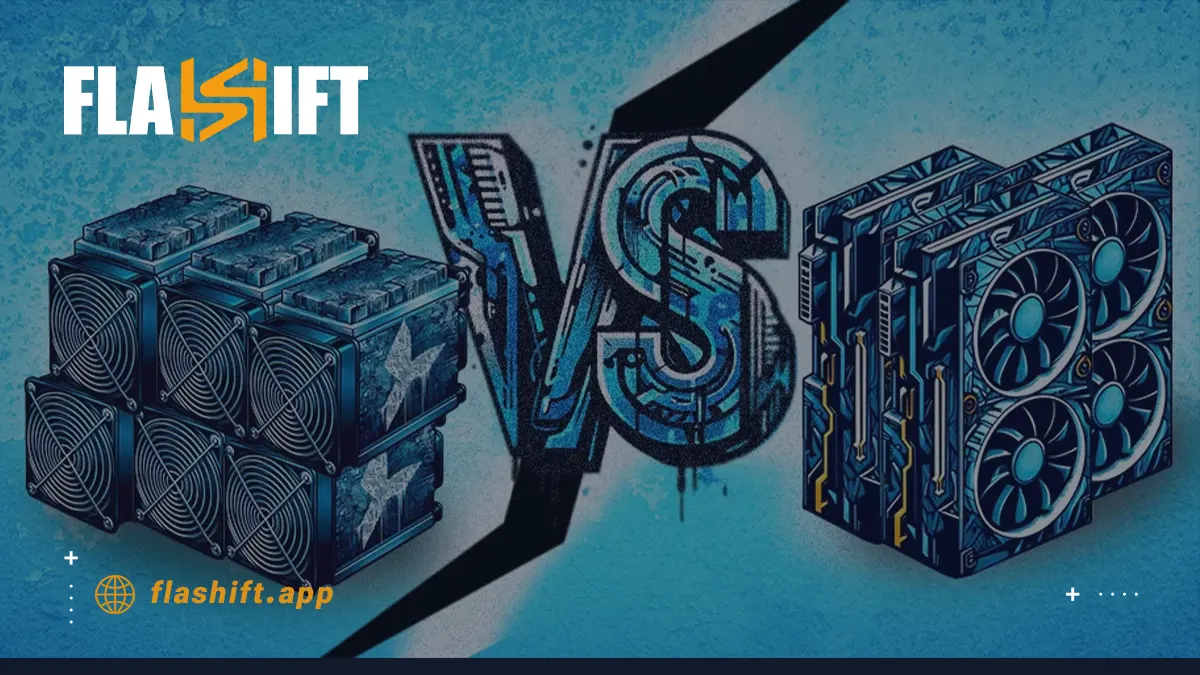
Generally, two types of hardware are used for cryptocurrency mining. These are ASICs, which stands for Application-Specific Integrated Circuits, and GPUs, which are short for Graphics Processing Units. Each has its advantages, disadvantages, and specific use cases.
- ASIC Miners:
ASICs are factory-built machinery designed to mine cryptocurrencies or algorithms. They perform very efficiently and are excellent at mining Bitcoin using the SHA-256 algorithm.
Pros of ASICs
- Efficiency: Very efficient; high hash rates are achieved with less power consumption than GPU rigs.
- Performance: With more processing power in the algorithm they mine, ASIC miners remain the most powerful mining machines.
- Profitability: Because the ASICs are optimized so much for specific coins, they can be more profitable in many cases over a more extended period.
Cons of ASICs
- Limited Flexibility: Since ASICs are developed to mine one specific algorithm, switching to mine another cryptocurrency requires using another ASIC machine.
- High Initial Costs: ASICs are very expensive, sometimes costing thousands of dollars for higher-end machines.
- Obsolescence: As cryptocurrency mining algorithms and technologies change, new models sometimes render versions released just a few months ago obsolete.
- Centralization Concerns: ASICs lead to centralization because large mining farms dominate most of the network’s mining power.
Best for: ASIC miners are perfect for those who want to focus their mining efforts on just one virtual currency, such as Bitcoin or Litecoin, and who want to be highly efficient and profitable in the long run.
- GPU Miners
GPUs are graphics cards that can be employed in cryptocurrency mining. Most GPU mining rigs involve a few GPUs joined and fitted to one motherboard, as they can enable parallel processing of their outputs. GPU miners are more flexible than ASICs, which can mine many coins, including Ethereum, Zcash, and Monero.
Pros of GPUs
- Flexibility: Mining with GPUs allows for the operation of a broad spectrum of cryptocurrencies, which gives them much more flexibility in the event of market changes.
- Resale Value: If you stop mining, a GPU can still be used with a computer for gaming or resold in the second-hand market.
- Upgradeability: You can easily add more GPUs to your mining rig to grow hash power over time.
Cons of GPUs
- Low Efficiency: GPUs are less efficient for any hash rate and consume more power than an ASIC.
- High Power Consumption: This is going to suck a good deal of power with several on and knocks back profitability with high electricity costs.
- Initial Setup: Building and setting up a GPU rig takes considerably more time, effort, and technical knowledge than buying an ASIC.
Best use case: Mining rigs using a GPU are best for any miner who wants the flexibility to mine many cryptocurrencies or is new to mining and wants the ease of lower upfront costs, building their rig bit by bit.
Key Factors to Consider When Choosing Mining Hardware
In addition to several other considerations, some of the key factors that go into deciding between ASICs and GPUs include:
1. Hash Rate
The hash rate refers to how much computational power your hardware possesses. This is how quickly your rig can perform necessary calculations to compete in earning rewards. ASIC miners generally have a higher hash rate than GPU rigs, but GPUs are more versatile.
2. Electricity Consumption
Mining hardware consumes a lot of electricity, and power consumption can severely dent profitability. ASICs are generally more energy-efficient. While GPU mining rigs use a good deal more electricity, you’ll run several GPUs, always working the ratio of power to hash rate in advance to approximate how much energy your rig will use instead of potential mining rewards.
3. Cost
The upfront cost is different depending on the chosen mining hardware. ASIC miners are more expensive in the initial investment but provide high efficiency and higher profit in the long run. In contrast, GPU rigs need more initial investments with multiple GPUs, motherboards, and cooling. Thus, it is more flexible to mine various coins. Consider budget, but also think about your long-term goals when evaluating cost.
4. Longevity and ROI
Profitability for mining hardware depends on the price of the cryptocurrency mined, the cost of electricity, and the estimated life cycle of the hardware itself. ASIC miners have long-term viability problems due to how often models are released. In contrast, GPU rigs seem to last much longer since they can adapt to a change in cryptocurrency, although they’re less immediately profitable.
5. Noise and Heat
ASIC miners and GPU mining rigs generate significant heat and noise, though the ASICs tend to be much hotter and noisier because they are so powerful. Almost all ASICs require a properly cooled and ventilated area, while GPU mining rigs will give the operator more freedom regarding location and setup.
Popular ASIC Models and GPU Choices
ASIC Miners:
- Bitmain Antminer S19 Pro: Known for its high hash rate and energy efficiency, the S19 Pro is one of the most popular ASICs for mining Bitcoin.
- MicroBT Whatsminer M30S: Another top-tier ASIC for Bitcoin mining, offering competitive hash rates and power efficiency.
- Innosilicon A10 Pro+: A leading choice for Ethereum mining, explicitly designed for the Ethash algorithm.
GPUs:
- NVIDIA GeForce RTX 3080/3090: Highly powerful and efficient for mining Ethereum and other altcoins.
- AMD Radeon RX 6800 XT: A popular choice for Ethereum miners due to its balance of price and performance.
- NVIDIA GeForce GTX 1660 Super: A budget-friendly option with good efficiency for smaller mining operations.
So…
The choice of hardware depends on one’s budget, goals, and the type of cryptocurrency one wants to mine. If this is for professional miners focusing on only one coin, Bitcoin or Litecoin, then an ASIC miner would be the most efficient and profitable option. GPU rigs would be a good choice for those planning more flexibility in mining several cryptocurrencies.
Therefore, be very careful while choosing, considering at least the hash rate, power consumption, cost, and longevity to make the best decision. The correct hardware setup will either grant you a successful small-scale mining process or one in which success is achieved after scaling up over time.
Understanding Cryptocurrency Mining Pools
Mining a cryptocurrency can be competitive and intensive. While solo miners try to solve complex math problems independently, this approach usually requires immense computational power and may take a reasonably long time before rewards are achieved. At this point, mining pools become a collaborative approach. Miners can amalgamate their resources to share computational work times in a mining pool for more consistent payouts.
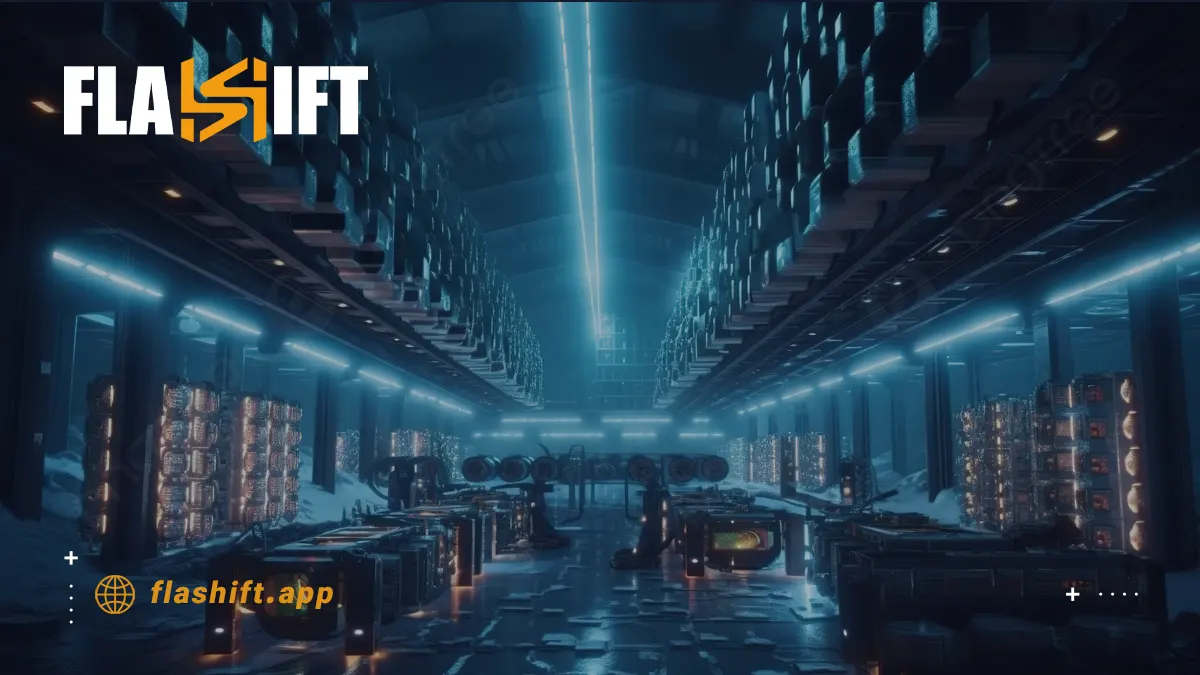
In this tutorial, we will explain what a mining pool is and how it works, discuss its benefits, and discuss several factors to consider when choosing one that is appropriate for one’s needs.
What Is a Mining Pool?
A mining pool is a group of miners who collectively execute the task of solving a cryptographic puzzle and undertaking transaction validation on the blockchain. Once the computations are combined, their chances of solving the block increase; hence, they receive their block reward. In finding a block, rewards are divided proportionally among pool participants to each participant’s hash rate.
The mining pools are done to provide miners with more regular and predictable payments, whereas solo mining is less regular yet substantially larger in value upon rewards.
How Do Mining Pools Work?
Mining pools work by splitting the complex cryptographic work between many miners. How does this work?
- Assignment: The pool’s central server assigns small portions of the cryptographic puzzle-called “shares”-to each participant. Each miner works on solving their assigned share.
- Validation: Once the miner has solved his share, he submits this solution to the pool. Subsequently, once the whole pool has solved this block, it is validated and added to the blockchain.
- Distribution of Payout: In this, the block reward is split with the added transaction fees, if any, according to the hash power contributed. The more hash power a miner commits, the greater his share of the reward will be.
Types of Reward Distribution Models
The mining pools adopt different reward distribution models to distribute their earnings among the pool participants. A meaningful understanding of such models is required when choosing mining pools. Some of these reward-sharing methods include:
- Pay-Per-Share (PPS):
In the PPS pool, miners are rewarded a fixed amount per share they submit, regardless of whether the pool mines a block. This yields predictable, on-the-spot returns to the miners but generally includes a higher pool fee. It is ideal for miners seeking fixed payouts.
- Proportional (PROP):
In this model, miners are rewarded according to the number of shares they submit in a mining round. The block reward split depends proportionally on each miner’s contribution. Of course, this may often lead to inconsistent or variable pay because one’s rewards depend on the pool’s success at finding blocks.
- Pay-Per-Last-N-Shares (PPLNS):
PPLNS pays miners based on the last “N” number of shares submitted before finding a block. This method spreads the reward over the recent contributions, which means that the longer one stays mining in the pool, the better their chances of earning rewards. PPLNS is generally more volatile than PPS but can be more profitable for longer-term miners.
- Solo Mining in a Pool:
Some pools allow “solo” mining, whereby a miner gets the entire block reward if he solves a block himself. This combines the advantages of solo mining with access to the pool’s infrastructure. Like traditional solo mining, the downside is that payouts are infrequent and large.
Benefits of Joining a Mining Pool
- Consistent Payouts
Mining pools provide frequent small payouts, whereas miners might go weeks and months without finding a block when mining solo. Mining pools spread their earnings to provide a steady income flow.
- Lower Barrier to Entry:
This way, it allows miners not in a position to operate large and powerful mining rigs to join a pool and be the only way to receive awards, even on small computational powers. Smaller miners can participate in the network and get a fraction of the block rewards by pooling their resources.
- Reduced Variance:
Pool mining decreases the “luck” factor compared to solo mining, in which a single miner’s probability of solving a block is relatively low. Therefore, sharing rewards in a pool means that miners have less variance in earnings over time.
- Infrastructure and Support:
This includes infrastructure like servers, monitoring, and support services to make one’s mining setup as efficient as possible. Some pools periodically provide real-time data with hash rates, mining performance, and earnings.
Downsides of Mining Pools
- Pool Fees:
Most mining pools charge miners a fee based on block rewards gained, usually between 1% and 3%. While this allows the pool to pay maintenance costs, it reduces a miner’s overall profit. Therefore, comparing fee structures across pools before joining is important.
- Centralization Concerns:
The large mining pools contribute to centralizing the mining power in a few hands, which works against the free nature of the blockchain networks. Several cryptocurrency communities, such as Bitcoin, closely track the influence of large pools so that no single pool controls the network.
- Dependence on the Pool:
Mining in a pool means your earnings are dependent on performance and stability. Your profits will be reduced if the pool decreases or technical issues develop.
Choosing the Right Mining Pool
Miners must consider a set of parameters when picking a mining pool to ensure it fits their goals and configuration. Among them are:
- Pool size:
Bigger pools generally find blocks faster and get more consistent payments, but rewards are divided between more miners, so each individual receives smaller payments. Small pools may have more prominent awards per miner but less frequently.
- Fees:
Most cryptocurrency mining pools charge a fee to cover their operational costs. The most common range is 1% to 3%, but some pools offer 0% fees, which usually means lower payouts or a temporary promotion. Always weigh the fee structure against the pool’s payout model and performance.
- Payout Frequency:
Consider the frequency at which the pool pays out daily, at certain thresholds, or otherwise. This may concern you, particularly if you require more frequent income streams.
- Minimum Payout Thresholds:
Some pools have a minimum payout threshold, meaning you must mine a certain amount of cryptocurrencies before it credits the earnings into your account. Please ensure the pool threshold coincides with your mining capacity to avoid payment delays.
- Location and Server Latency:
Choose a pool with servers as close to your location as possible to reduce latency. The lesser the latency, the faster your mining rig can communicate with the pool. This will improve your efficiency and reduce the number of rejected shares.
- Reputation and Security:
Research the pool’s reputation within the cryptocurrency mining community. Look for pools with a good reliability history, customer support, and timely payouts. Ensure the pool uses robust security to protect your funds and personal data.
Popular Mining Pools
The most well-known and most reliable mining pools are:
- F2Pool: This is one of the largest multi-currency mining pools, mining Bitcoin, Ethereum, and Litecoin, among other mineable coins.
- Slush Pool: An old mining pioneer, Slush Pool has a good reputation for transparency and reliability. Nevertheless, most of its activity revolves around Bitcoin mining.
- Ethermine: Speaking of the Ethereum mining pool, it is the largest mining pool. It boasts decent fees, and reliable payouts are also one of its salient features.
- Antpool: This multi-currency pool, operated by Bitmain, is also among the largest BTC mining pools in the world.
Cryptocurrency mining pools allow for a more realistic approach to how miners can increase their chances of substantial cryptocurrency rewards with minimal variance. Miners receive much smaller but more frequent payouts with pooled resources to make mining at least somewhat predictable. When choosing a mining pool, consider pool size, fees, payout structure, and reputation to maximize your returns while reducing risks.
Calculating Cryptocurrency Mining Profitability
Cryptocurrency mining is a very lucrative investment, but before investing in hardware and electricity, you should calculate how much money the investment will bring. Several factors are involved in determining whether mining is a lucrative business. The hardware costs include the cost of electricity and the prices of the cryptocurrency. Understanding how to calculate profitability in cryptocurrency mining will help you make better and more informed decisions about mining operations.
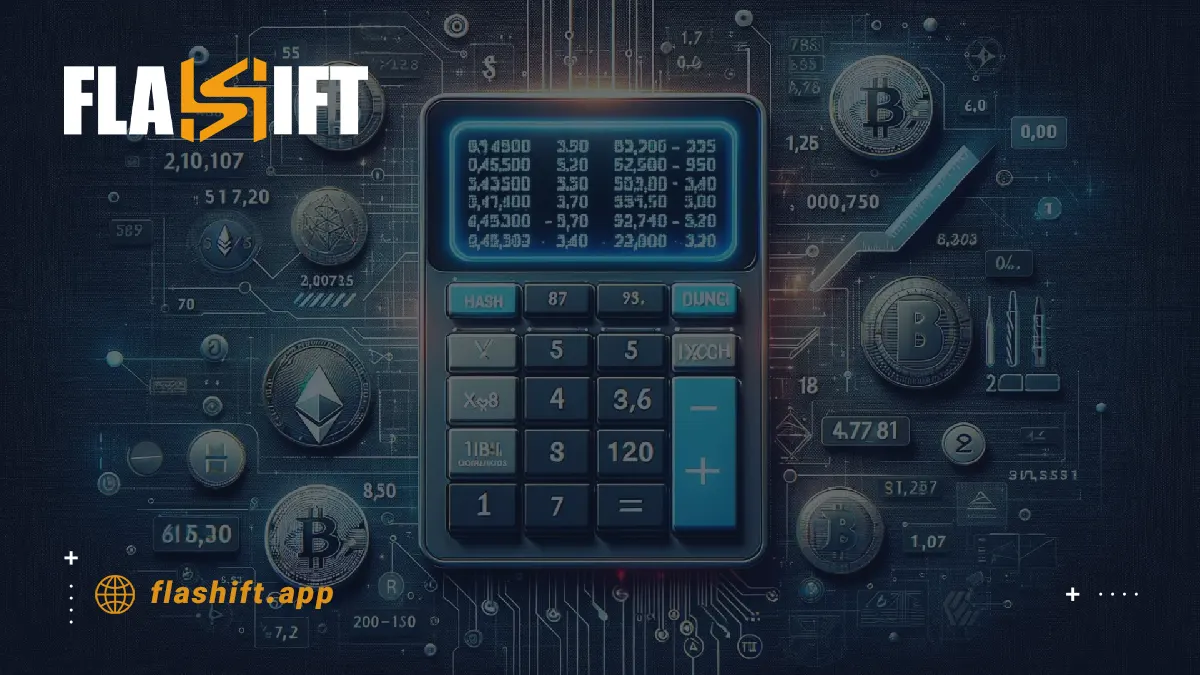 Key Factors Influencing Mining Profitability
Key Factors Influencing Mining Profitability
Hash Rate
The hash rate is the essential measure of the computational power of your cryptocurrency mining gadget. It is typically measured in H/s. The higher the hash rate, the greater the number of cryptographic puzzles your miner can solve, and your chance of earning a reward is increased. The hash rate is determined by the type of hardware being used. This means the ASIC miners tend to have the best hash rates compared to GPU rigs.
Electricity Costs
Mining is an electricity-intensive process, and the cost of electricity is the most critical factor in profitability. You will want to calculate the electricity cost in your area—keep in mind that it’s billed in kilowatt-hours or kWh—and factor in how many watts your mining rig consumes.
Mining Rewards
Cryptocurrency mining rewards are, in essence, the cryptocurrencies that one is awarded after successfully mining a block. As indicated earlier, different cryptocurrencies have varying mining rewards, with some, like Bitcoin, gradually reducing rewards due to innate mechanisms such as halving events. Besides the rewards, transaction fees are paid for each transaction added onto a block, which also varies depending on network use.
Mining Difficulty
Mining difficulty measures the amount or quantity in which the process of finding a new block on the blockchain is complex. The difficulty is adjusted cyclically based on the total computing power in the network. That would increase the difficulty of mining new blocks as new miners join in. Inverse to that, when miners leave, the network adjusts its mining difficulty downwards.
Hardware Costs
Mining hardware costs might be very high since it deals with ASIC or GPU so that the cost could be higher. For profitability, you would consider how many days it would take to recover your hardware investment.
Pool Fees
From there, the pool will take a small fee percentage from the total reward if you are mining in a pool. Generally, this ranges between 1% and 3%, so factor these fees into your profitability calculations.
Cryptocurrency Prices
Another critical determinant of your profitability is the cryptocurrency’s price to be mined. Mining awards are paid in cryptocurrency, so when prices fluctuate, any fluctuation in value from earnings is observed. You should regularly follow the cryptocurrency prices you are mining, especially if you’re mining a volatile asset.
Post-Halving Mining Landscape
The Bitcoin halving event in April 2024 reduced block rewards from 6.25 to 3.125 bitcoins, significantly impacting miners’ profitability. This reduction has prompted miners to adopt more efficient technologies and diversify revenue streams to maintain viability. For instance, many are now offering hosting services for AI and cloud computing or participating in carbon credit trading to offset decreased mining rewards.
Formulas for Calculating Mining Profitability
To calculate cryptocurrency mining profitability, you can use the following formula:
Profitability = (Mining Rewards x Cryptocurrency Price) – (Electricity Costs + Hardware Costs + Pool Fees)
Let’s walk through a simplified example:
- Hash Rate: 100 TH/s (for Bitcoin mining)
- Electricity Costs: $0.10 per kWh
- Power Consumption: 3,500 watts
- Block Reward: 6.25 BTC (Bitcoin)
- Bitcoin Price: $30,000
- Pool Fee: 2%
- Mining Difficulty: Assume static for this example
- Mining Rewards:
Using a cryptocurrency mining calculator or based on network conditions, you estimate that your rig will earn 0.01 BTC monthly. A Bitcoin price of $30,000 would result in $300 in monthly rewards.
- Electricity Costs:
Your rig consumes 3,500 watts. To calculate monthly electricity usage, use the formula:
Power Consumption (kWh) = (3500 watts/1000) x 24 x 30 = 2,520 kWh/month
At an electricity rate of $0.10 per kWh:
Electricity Costs = 2,520 x 0.10 = 252 USD/month
- Pool Fees:
With a 2% pool fee, you would pay:
Pool Fee = 0.02 x 300 = 6 USD/month
- Profitability Calculation:
Profitability = (300 – 252 – 6) = 42 USD/month
After paying electricity and pool fees, this example comes to $42 in monthly profit. The above calculation does not factor in hardware costs, which would extend the timeframe required for one to realize profitability.
Tools for Calculating Mining Profitability
Several online calculators will lighten this load by factoring in the variables. They request that you input your hash rate, power consumption, electricity costs, and pool fees. Common tools include:
- Whattomine: A universal tool that supports profitability calculation for ASIC and GPU miners and provides detailed estimates for many coins.
- CryptoCompare Mining Calculator: This calculator covers the expected return using your hardware and electricity consumption.
- NiceHash Profitability Calculator: The nice thing about this is that one can easily approximate daily or monthly earnings based on individual hardware and location.
Break-Even Point and ROI
Calculating your monthly profitability allows you to estimate how long it will take to break even on the hardware investment. The break-even point is the time mining rewards take to pay for the initial hardware costs.
Break-Even Time = (Hardware cost/Monthly profitability)
For example, if your mining rig costs $2,000 and your monthly profitability is $42, the break-even time would be:
(2000 /42) ~47.6 months
Once you’ve broken even, any additional cryptocurrency mining rewards are pure profit, though you’ll still need to account for ongoing electricity costs.
Maximizing Mining Profitability
- Optimize Power Efficiency:
Use hardware that offers a good balance between hash rate and power consumption. Lower electricity costs significantly increase profitability.
- Choose the Right Coin:
The mining profitability for different cryptocurrencies can differ sharply. You can use mining calculators to find out which is most profitable to mine with your hardware.
- Join a Mining Pool:
Solo mining will result in longer dry spells between rewards. Join a pool for more frequent, smaller payouts per reward.
- Keep an Eye on Market Conditions:
Always keep a close watch on cryptocurrency prices and mining difficulty. When the coin you mine gets too tricky or falls in price, it will be the best time to mine another coin.
- Consider Mining in Low-Cost Electricity Regions:
Some miners move or set up operations in areas where electricity is cheaper because that increases their profit. Countries such as China, historically Russia, and parts of North America have low enough electricity rates to make these jurisdictions popular with large-scale miners.
Conclusion
The mining profitability calculation helps anyone decide whether mining cryptocurrencies is worth their time. You can estimate your probable profit by considering hash rate, electricity, hardware, and cryptocurrency prices. Mining profitability is not constant; it will probably alter with market conditions, hardware changes, and mining difficulties, so regular check-ups are necessary to make the correct adjustments toward profitability.
Legal and Environmental Considerations in Cryptocurrency Mining
While cryptocurrency mining is attracting significant momentum, there are some critical legal and environmental considerations for miners. Regulatory landscapes could significantly impact operations at many points, primarily as governments worldwide work to develop new policies covering cryptocurrencies and ecological sustainability.
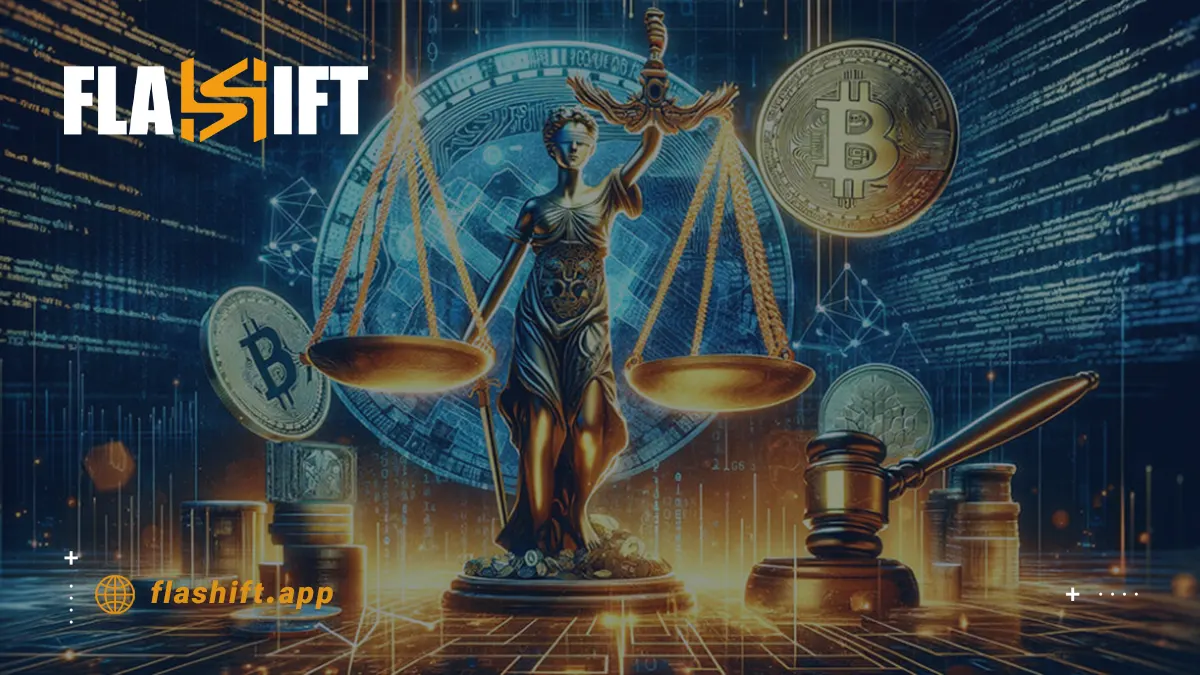
- Regulatory Compliance
The legal standing of cryptocurrency mining has entirely changed from country to country and sometimes even region to region. Some have welcomed the activity with open arms, while others have passed laws restricting it or banning it altogether. Miners need to know what is expected of them legally in the area where they set up shop to avoid getting fined, shut down, or even court dates.
China, Algeria, and Bolivia have imposed an outright ban or tight regulations on cryptocurrency mining, especially regarding energy consumption and financial policies.
Countries like the United States, Canada, and Switzerland will be lenient on regulations, but miners could consider other requirements regarding tax and securities law. The taxation of cryptocurrency mining, energy consumption, and finance licensing are a few areas in which miners should research and keep themselves updated on the local regulations before starting a mining operation.
- Tax Implications
Cryptocurrency mining can generate substantial income, and in most jurisdictions, cryptocurrency earnings are indeed subject to taxes. Depending on where you operate, mined cryptocurrencies could be treated as income, capital gains, or business revenue. It is vital to:
- You can keep a tab on earnings for tax reporting.
- I’d like you to please understand how your country classifies and taxes the mined coins.
- Please consult a tax professional so that one cannot be considered non-compliant.
- Patents and Intellectual Property
Patents or other forms of intellectual property protection cover much cryptocurrency mining hardware and software. The miner must ensure intellectual property rights are not violated when purchasing or self-building hardware rigs. Utilizing open-source software or licensed products will avoid disputes that are most likely to arise from lawsuits.
- Anti-Money Laundering and Know Your Customer Laws
Since cryptocurrency is sometimes associated with dubious activities, many countries have imposed AML and KYC compliance requirements on cryptocurrency exchanges or mining operations. It could be that the mining pool or exchange will demand confirmation of your identity to ensure you comply with such policies. Non-compliance may result in an acceptable or legal problem, especially when exchanging mined cryptocurrencies for fiat money.
Environmental Considerations

- Energy Consumption
Cryptocurrency mining generally requires high energy consumption, especially for PoW-based coins like Bitcoin. The demand for such high electricity usage has raised several concerns regarding its environmental impact, mainly where cryptocurrency mining operations depend on non-renewable energy sources such as coal or natural gas.
For example, estimates show that mining of Bitcoin alone uses more electricity in a year than some whole countries, which has alarmed some environmentalists and policymakers. Therefore, Some miners have started resorting to renewable energy sources such as hydroelectric, solar, or wind.
These are some of the ways that the negative environmental impact of mining is lessened:
- Most governments either enact or consider regulations regarding energy usage in their mining operations. For example, New York placed a moratorium on new cryptocurrency mining operations using non-renewable sources.
- Miners can use more energy-efficient hardware devices to minimize power consumption and reduce their carbon footprint.
- E-Waste
Further, cryptocurrency mining requires special-purpose physical hardware, like ASICs or GPUs, with limited life spans. When outdated, such equipment often becomes electronic waste. The rapid development of mining hardware leads to frequent hardware changeovers, which in turn causes e-waste.
Recycling or finding reuses for such hardware can help reduce its environmental impact. Companies are discussing making cryptocurrency mining hardware more viable by including more durable materials or designs that make hardware upgrades easier.
- Carbon Footprint
The carbon footprint of cryptocurrency mining is another worry. Depending on energy sources, it may contribute to greenhouse gas emissions. Miners can reduce their carbon footprint by:
- Utilizing carbon offsets or engaging in carbon-neutral mining initiatives.
- Operations should be located in areas with a high availability of renewable energy, such as Iceland, which offers abundant geothermal and hydroelectric power.
- Heat Generation
Mining rigs generate much heat, further straining local power grids and increasing a data center’s cooling needs. To avoid wasting energy keeping cryptocurrency mining rigs at their prime temperature, immersion or air cooling-efficient methods should be considered.
Some miners reuse the excess heat for productive purposes, such as heating apartments, greenhouses, or other premises. Thus, mining by-products become renewable resources.
Addressing Environmental Concerns
The cryptocurrency industry is increasingly aware of the environmental impacts of cryptocurrency mining and is seeking alternatives to the energy-intensive proof-of-work model. For instance, Ethereum is on the way to implementing a PoS consensus mechanism that requires much less energy than PoW. In PoS, validation is based on a validator’s stake in the network rather than on computing power, significantly reducing the environmental burden.
he Bottom Line
Cryptocurrency mining must be done sensitively, both legally and environmentally. Attributing regulatory frameworks, following tax policies, and best practices about environmental sustainability are indispensable parts of ensuring profitability over the long term, operatively speaking. As long as the world is gearing towards eco-friendliness, miners emphasizing sustainability and energy efficiency will compete better with less environmental harm.
FAQ
- What is cryptocurrency mining?
Cryptocurrency mining is incorporating and confirming transactions into a blockchain ledger. Miners use powerful computers to solve complex mathematical problems, keeping the network secure and verifying transactions. In return for their computational effort, miners are awarded newly minted cryptocurrency coins or tokens.
- Why is mining necessary for cryptocurrencies?
Mining is crucial in any cryptocurrency with a consensus mechanism like PoW. It makes it difficult to tamper with the blockchain, ensuring security and integrity. This decentralized the network’s control, making it much more impervious to censorship and attacks.
- What essential components are needed to set up a mining rig?
The cryptocurrency mining rig needs a hardware unit for mining-like an ASIC or GPU power supply, which is quite substantial, a cooling mechanism-fans or liquid cooling-and an uninterrupted internet connection. If you’re not mining solo, you’ll need a mining software application and a mining pool membership.
- How do I choose a suitable location for my mining rig?
Please place it in a cool, dry, and well-ventilated place to decrease the temperature generated by the mining rig. Ensure the place has a stable power supply and internet connectivity. Noise level and space availability can also be considered, as mining rigs are usually loud and take up much space during setup and maintenance.
- What factors should I consider when choosing mining hardware?
While choosing mining hardware, the hash rate or processing power, energy efficiency in hashes per watt, the initial cost, and the type of cryptocurrency to be mined must be considered. Also, it is necessary to study the lifetime of that hardware and the resale value for later stages so that all these may meet profitability goals.
- ASIC vs. GPU: Which one is better for mining?
ASICs are specialized hardware for mining certain kinds of cryptocurrencies, like Bitcoin. They feature superior hash rates and energy efficiency compared to their GPU alternatives. On the other hand, GPUs’ parallel processing versatility allows them to mine many different types of coins, making them a better option than ASICs for coins with low difficulty or frequently switching algorithms.
- What do mining pools use the different payout models?
PPS pays miners a predetermined reward for each share they successfully submit. In contrast, PROP pays proportionally to the work the miner contributed through shares. PPLNS stands for Pay-Per-Last-N-Shares, which pays according to the number of shares a miner finds in the last “N” shares before a block is found.
- How do I calculate the profitability of my mining operation?
To calculate mining profitability, consider your hash rate, electricity costs, hardware expenses, pool fees, and current cryptocurrency prices. Use the formula:
Profitability = (Mining Rewards x Cryptocurrency Price) – (Electricity Costs + Hardware Costs + Pool Fees)
Plug these values to estimate and compare your potential earnings against your costs.
- What tools can help me estimate mining profitability?
Several online estimators, like Whattomine, CryptoCompare Mining Calculator, and NiceHash Profitability Calculator, may help you approximate the profitability of mining. These ask you for hash rate, power consumption, electricity cost, and pool fees to approximate the income you might achieve.
- What are the legal implications of cryptocurrency mining?
Legal implications also vary by country and region. Miners should be informed about cryptocurrency taxation, energy consumption regulations, and financial licensing in their locations. Please stay updated on the legal status of mining in your region to avoid fines or other legal problems.


